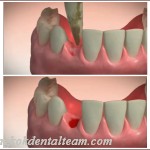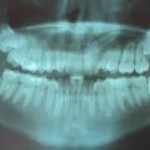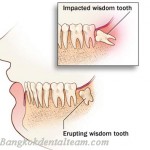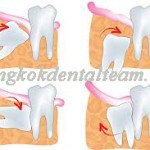Archive for the ‘Oral Surgery’ Category
-
Oral and Maxillofacial Surgery
Oral Surgery
What is Oral Surgery?
Oral and maxillofacial surgery is the specialty of dental practice that deals with the diagnosis and surgical treatment of diseases, injuries and defects of the mouth, jaws, face and related structures. This includes the removal of impacted and decayed teeth, placement of dental implants, biopsy and removal of cysts and tumors of the mouth and jaws, treatment of facial trauma and reconstructive jaw surgery.
TOOTH EXTRACTION/REMOVAL
Non – Surgical Extraction
This method will be suggested when the affected tooth is already loose. Non-surgical extraction is performed by placing gentle traction and rotation on the affected tooth with dental forceps or needle holders. Excess tissue is removed as carefully as possible so as to avoid fracture. Once clean, the alveolus can be filled with osteoinductive materials, impregnated resins, or the newer bone morphogenic materials. After filling, the alveolus is sealed. Following the procedure we will try and make you as comfortable as possible by providing home care support including antibiotic therapy, pain management, and dietary advice.
Surgical Extraction
Surgical extraction is performed on non-mobile teeth with normal or near normal attachment levels. If your dentist has studied your radiographs and concluded that extraction is necessary the next step will be the creation of a surgical flap. Your highly skilled oral surgeon will make a precise incision providing room to remove the alveolar bone. Following this the surgeon will isolate and gently elevate the roots of your tooth. After sufficient bone removal and elevation, the tooth root should become mobile. Small dental forceps or needle holders are used to grasp the tooth crown and then rotate the tooth on its long axis. Your surgeon will rotate the tooth to the point of resistance for 20 to 30 seconds. The rotation is then reversed and again held for 20 to 30 seconds. By using slow, continuous forces, the fibers are torn and the tooth becomes loose enough for gentle traction to remove it from its socket.
After the roots have been successfully removed, a post-extraction radiograph will confirm that the operation has been successful. The alveolus can then be treated and sealed in the same way as practiced in the non-surgical extraction.
Wisdom teeth
Wisdom teeth serve no useful function and will often cause damage because when a wisdom tooth becomes partially exposed through the gums it cannot be cleaned properly and can collect food debris, bacteria and plaque around itself. This can result in tooth decay, gum disease, infection and abscess of not only the wisdom teeth, but of the nearby molars and surrounding gum tissue. The molars in front of the wisdom teeth are sometimes lost because of cavities and gum disease caused by the inability to clean the wisdom teeth properly. Cyst formation and other destructive pathology are also seen around impacted wisdom teeth. There may be pain and swelling, or you may have no symptoms at all, even though the other teeth in your mouth may be at risk of damage.
If removal of the wisdom teeth is necessary, the procedure is recommended in the late teenage years, before the roots are completely formed. Surgical procedures in general are better tolerated when one is young and healthy, and the gum tissues tend to heal better and more predictably when young. Most people experience minimal disruption of their normal routines, and time off from work or school is usually minimal. At this point it is worth noting that the removal of wisdom teeth can be of great benefit to your ultimate oral and general health.
Wisdom Teeth Problems
Whether wisdom teeth cause your mouth harm depends on several factors, including the size of your jaw and how your wisdom teeth grow in. Sometimes, problem wisdom teeth cause symptoms like pain and swelling. Or you may have no symptoms at all but the other teeth in your mouth could be at risk for damage.
These are the most common complications of leaving impacted wisdom tooth in place:
1. Decay, or dental caries. The positioning of wisdom teeth makes them hard to clean and hard to repair.
2. Fluid filled cysts. These can form from remnants of tissue around the crown of the tooth, becoming large and painful.
3. Infection of the surrounding gum tissue. This condition, pericoronitis, is most likely to occur if the tooth is partly erupted or very close to the surface.
Instruction for After Dental Extraction
Post Operative Care For Dental Surgery.
1.After tooth extraction or oral surgery,bite on this gauze for one or two hours.
2. Do not Spit or put ice chips on the incision.
3. Rinse your mouth with warm salt or soda water, and Brush your teeth very gently for the first two days.
4. If the pain increases 2 days after surgery,Please contact your dentist.
5. Consume a liquid or soft diet but use straws.Avoid hot and spicy food and don’t smoke.
6.Stitches may be removed within 5-7 days
Pages
- Gallery
- Testimony
- Our Dentists
- Store
- Our Place & Facilities
- Interesting places nearby
- Knowledge
- Technology
- SERVICE
- Services
- Price
- Appointment
- Promotion
- About us
- Map



